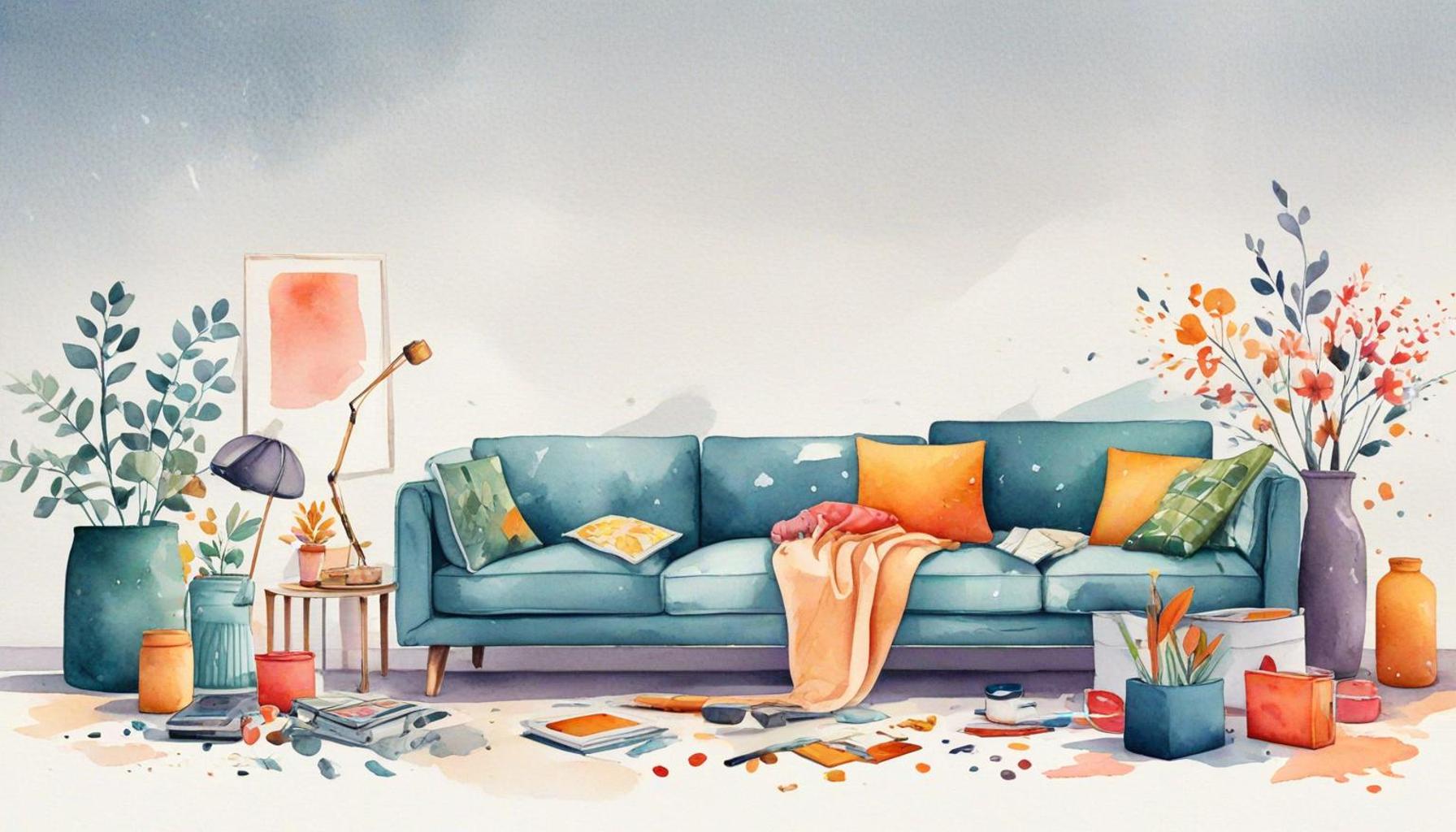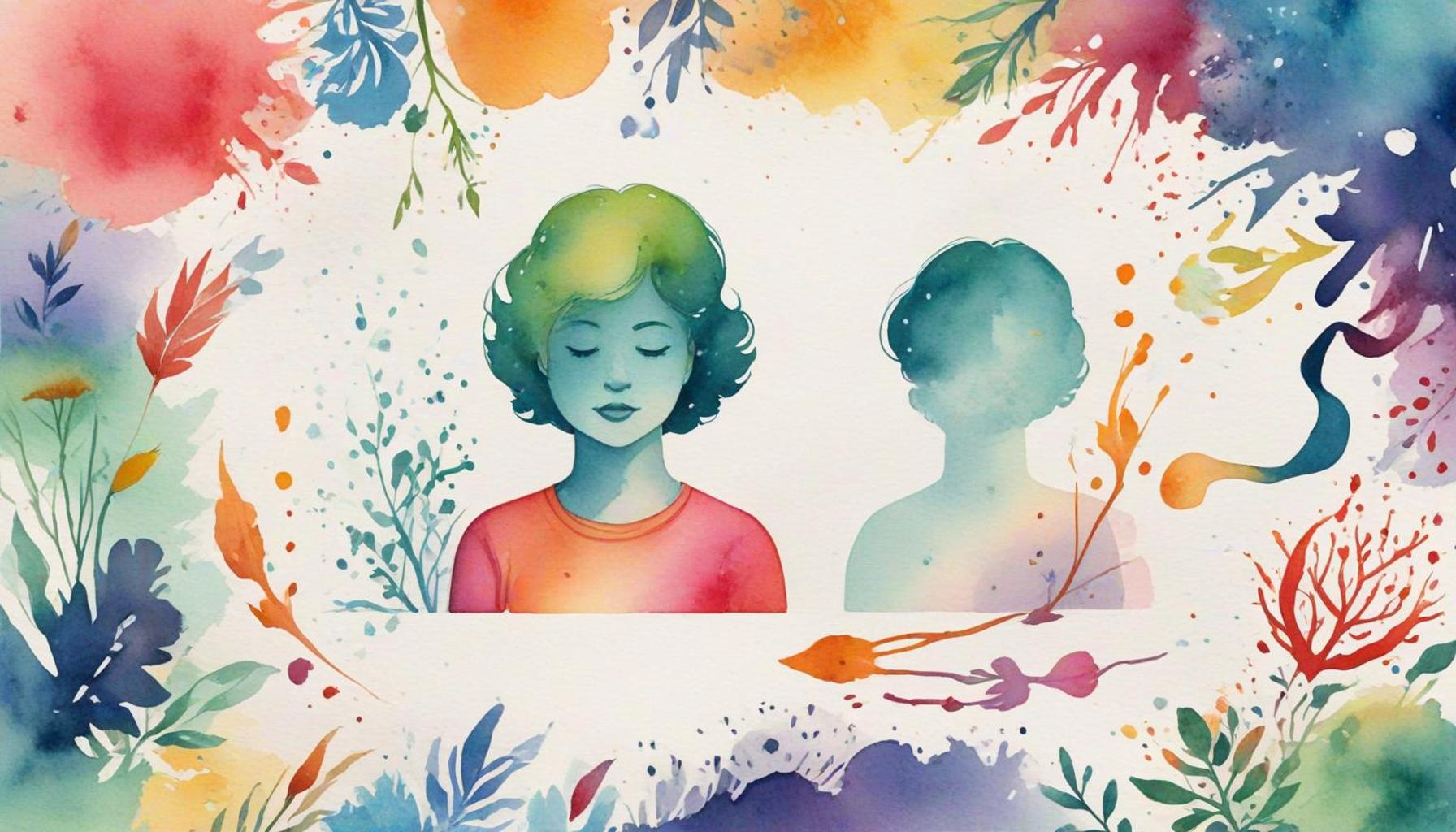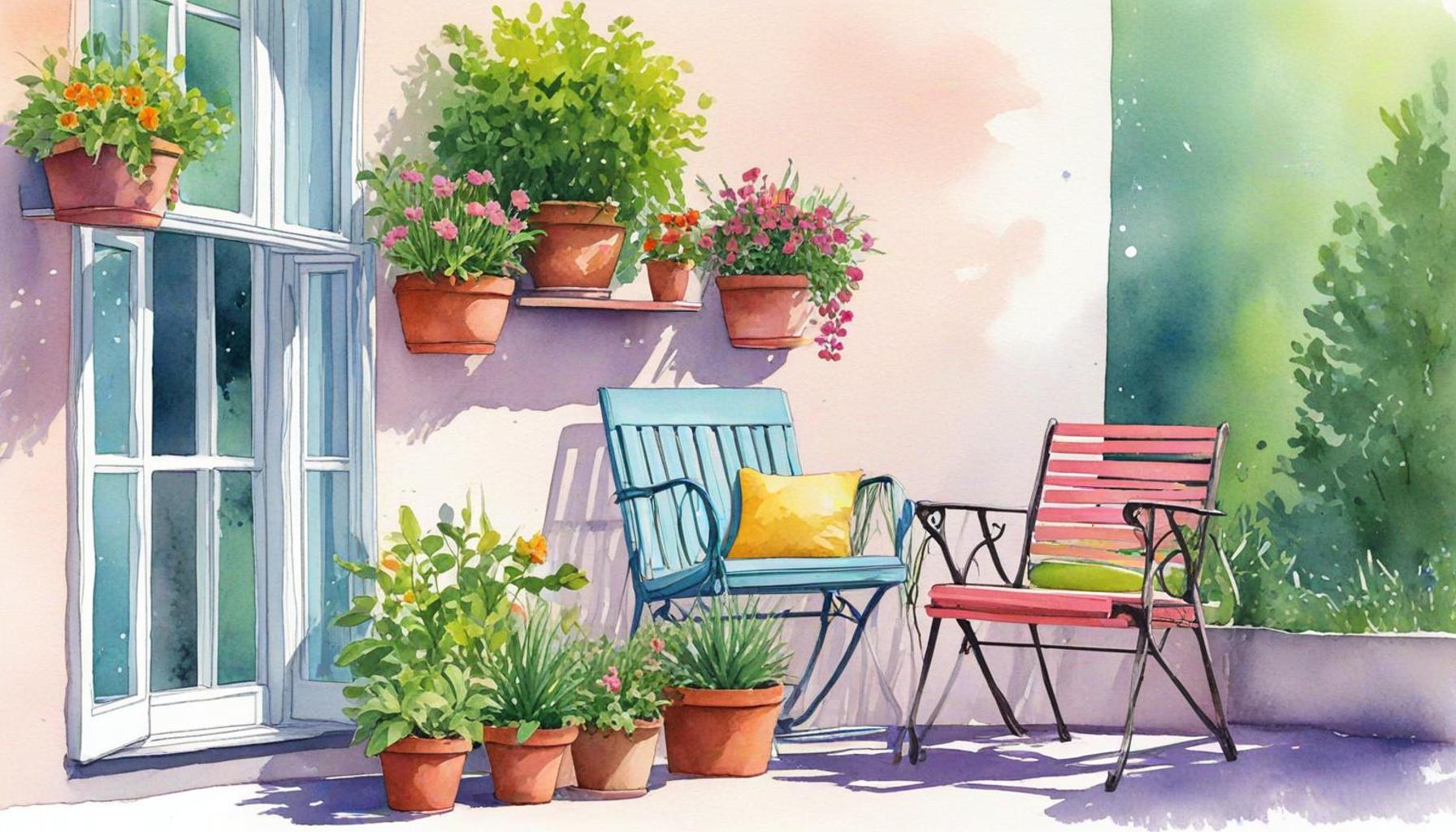The Influence of Clutter on Creativity: How an Organized Space Can Stimulate Innovative Ideas
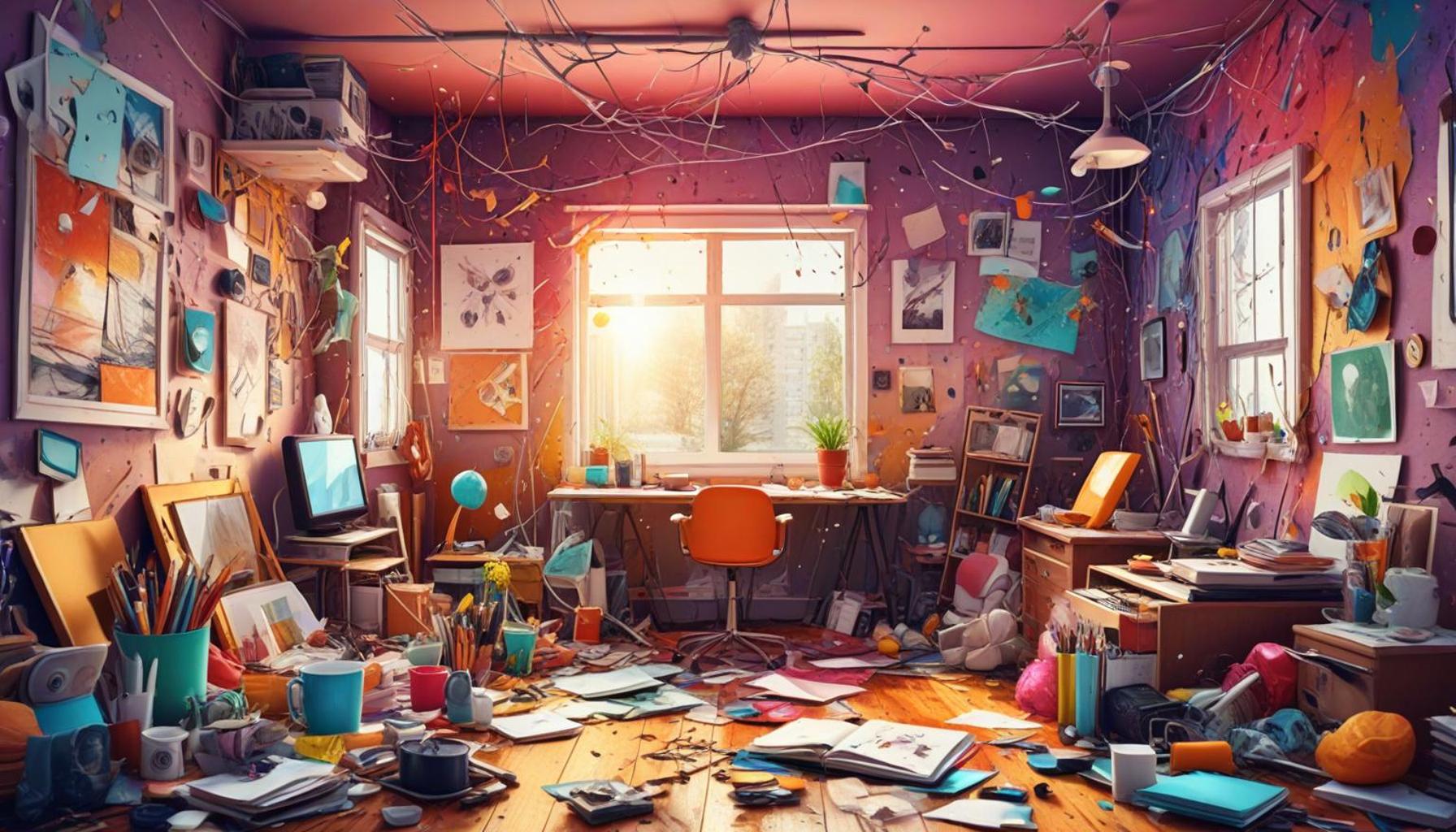
The Burden of Clutter on Creativity
Clutter can be more than just an eyesore; it can significantly impair your creative flow. Studies show that disorganization often leads to increased stress and distraction, hampering your cognitive abilities. Conversely, an organized space can serve as a canvas for your innovative ideas. Have you ever found yourself staring at a pile of papers, feeling overwhelmed? This sensation is not merely a mental hiccup; it reflects a deeper psychological struggle that can vacate your ability to think outside the box.
Effects of Clutter on Creativity
Consider the following effects of clutter on creativity:
- Overstimulation: Excess items can overwhelm the brain, decreasing focus. Projects like “The Minimalists” highlight how reducing visual noise can create a serene environment that fosters thought. For instance, if your workspace is filled with knick-knacks and unfiled documents, your mind may race with the distractions of your surroundings, making it difficult to hone in on one task.
- Increased Stress: Clutter can trigger anxiety, making it harder to think creatively. Numerous studies have shown that individuals working in disorganized spaces report higher levels of stress. A 2011 study from the Princeton University Neuroscience Institute found that clutter can restrict your ability to focus on other tasks, creating a cycle of stress and distraction.
- Limited Inspiration: A chaotic environment can stifle new ideas and solutions. Imagine attempting to brainstorm in a cluttered room; your creativity may falter under the weight of the disarray. Without a clean slate, the mind struggles to conjure up fresh concepts, often leading back to old undetected paths.
The Bright Side: Benefits of an Organized Space
In contrast, a well-organized space provides numerous benefits that can boost creativity:
- Clear Focus: An orderly environment helps you concentrate on tasks without the pull of distractions. When your workspace is streamlined, you may find yourself diving deeper into your projects, achieving more in a shorter amount of time.
- Enhanced Mental Clarity: Decluttering reduces distractions, fostering innovative thoughts. When your physical space reflects simplicity, it allows your mind to mirror that quality, leading to the development of clearer ideas. Studies suggest that individuals in clutter-free environments are more open to creative possibilities.
- Boosted Motivation: An inviting workspace can inspire productivity and creativity. Think about how a well-decorated office or a clean workspace can invigorate your spirit. The simple act of tidying can create a stimulating environment that encourages the flow of ideas.
As we delve deeper into the relationship between clutter and creativity, it’s essential to explore practical strategies for creating a conducive environment. Simple steps like organizing documents into labeled folders or reducing excess decorations can create a cleaner slate from which new ideas can emerge. A simple shift from chaos to order may spark your next brilliant idea, so consider giving your space a refresh and unlocking the creative potential that lies within.
DISCOVER MORE: Click here to dive deeper
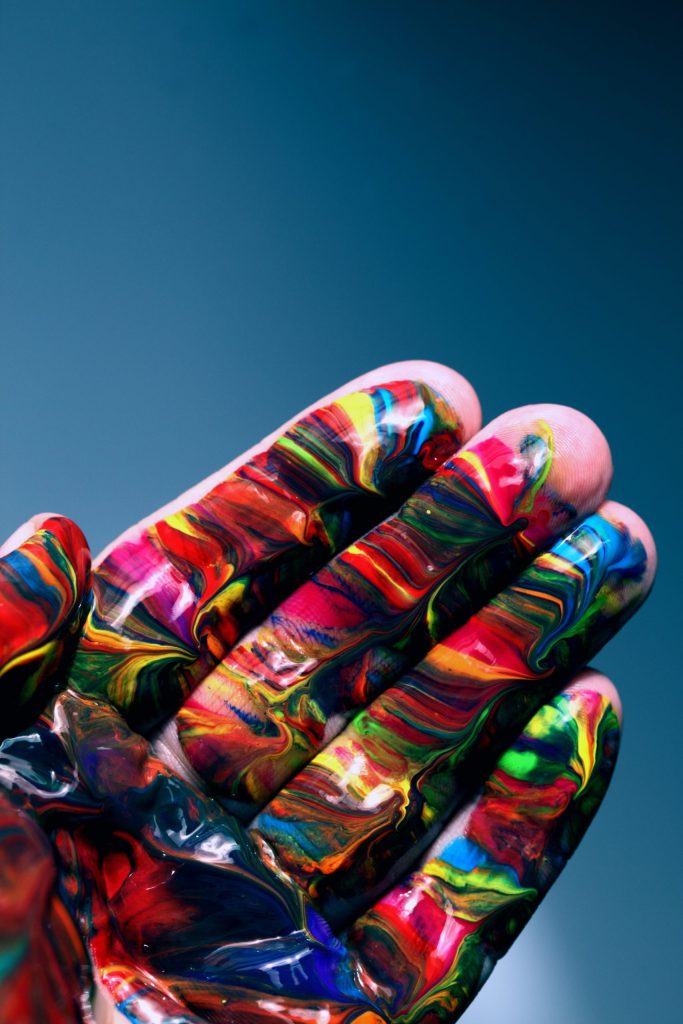
Understanding the Connection: Clarity and Creativity
The relationship between clutter and creativity is complex yet crucial for unleashing innovative potential. One might wonder, how does one’s environment translate to the wealth of ideas produced? The answer lies in the neuroscience of our cognitive processes. Research indicates that when individuals are confronted with a chaotic workspace, it rapidly overexerts their cognitive load. This means the brain is working overtime trying to filter out distractions and assess important information, which in turn diminishes overall creative output.
The Psychology of Space
The human brain is preconditioned to seek order. A disorganized space can lead to a psychological state known as “cognitive overload,” where the mind struggles to prioritize tasks efficiently. In such situations, creativity diminishes as individuals often resort to familiar thought processes instead of exploring novel solutions. According to a 2013 study published in the Journal of Environmental Psychology, participants in tidy environments were more likely to generate creative responses compared to those in disorganized settings.
Furthermore, the psychology of space extends beyond mere aesthetics. An organized environment can create a sense of calm, allowing ideas to flourish unhindered. Higher levels of productivity and inspiration in tidy offices are not just anecdotal. Corporations like Google and Apple have long recognized this link, investing heavily in creating organized and inspiring workspaces that facilitate the free flow of ideas.
Practical Insights: Strategies for Decluttering
Implementing effective strategies to reduce clutter isn’t merely about cleanliness; it’s about creating an optimal environment for creativity to thrive. Here are some practical insights to consider:
- Designate Specific Areas: Assign particular areas for different tasks; this helps in mentally separating and focusing on each activity without distractions disrupting your workflow.
- Utilize Organizational Tools: Invest in organizers, bins, or trays that can help categorize items effectively, making it easier to locate what you need when you need it.
- Practice Regular Cleanups: Establish a routine for decluttering, whether it’s weekly or monthly, to maintain an organized atmosphere that supports ongoing creativity.
- Minimize Decorative Items: While some decor can inspire, too many items can overwhelm. Choose a few elements that resonate with you and contribute to a calm, creative space.
By adopting these strategies, you can actively cultivate a space that encourages innovative thinking. A shift towards a more organized environment not only enhances productivity but may also elevate the quality of ideas generated, opening new doors to creative exploration.
The Influence of Clutter on Creativity: How an Organized Space Can Stimulate Innovative Ideas
As we delve deeper into the impact of clutter on creativity, it’s essential to understand the psychological effects that an organized environment can bring. Research has consistently shown that a tidy space fosters a calmer mind, thereby enhancing focus and stimulating innovative thought processes. This principle is particularly significant for those engaged in creative endeavors, as mental clarity can lead to more profound insights and breakthroughs.
Moreover, an organized workspace not only allows for better concentration but also encourages a sense of control. Individuals who work in clutter-free areas often report feeling more empowered and motivated. The absence of unnecessary distractions can help redirect the mind towards productive tasks, which is crucial for creative work. This is particularly relevant in industries that thrive on brainstorming and conceptualizing unique solutions.
Additionally, visual cues in a clean environment may trigger novel ideas. For instance, curated categories of materials—whether art supplies, design tools, or even digital icons—can promote quick recall and association, ultimately fueling creative expression. In contrast, overwhelming disarray can stifle this cognitive flow, making it harder for individuals to connect disparate ideas.
In practical terms, this suggests that taking the time to declutter not only results in an aesthetically pleasing environment but also enhances overall productivity and creativity. Simple steps, like organizing documents, digitizing notes, or using storage solutions, can significantly improve the creative outputs of individuals across various fields.
| Category 1 | Category 2 |
|---|---|
| Mental Clarity | An organized space promotes a serene mind, facilitating enhanced concentration. |
| Improved Productivity | Reduced distractions in an orderly setting can accelerate creative processes. |
Overall, the relationship between organization and creativity cannot be overstated. The challenge lies in finding and maintaining that balance, but with the right strategies, anyone can cultivate an environment that sparks innovative ideas and sustains creative momentum.
DON’T MISS: Click here to optimize your living space
Environment and Its Role in Creative Processes
The impact of an organized space on creativity extends beyond mere tidiness; it deeply intersects with how the brain processes information. Environments characterized by clutter often evoke feelings of stress, making it challenging for individuals to maintain focus. A study published in the Psychological Science journal found that cluttered environments can lead to increased levels of cortisol, the body’s primary stress hormone. Elevated cortisol levels can impair cognitive performance, particularly impairing creativity and problem-solving capabilities.
Color, Light, and Their Ephemeral Effects
Interestingly, the influence of organization is complemented by elements like color and light. Research in environmental psychology shows that colors can affect mood and cognition. For instance, blue hues can enhance feelings of tranquility and clarity, providing an ideal backdrop for creative thinking, while brighter colors like yellow may stimulate energy and optimism. By strategically selecting color palettes for a workspace, individuals can tailor their environment to encourage innovative thinking.
Similarly, natural light plays a vital role in boosting creativity. A study from the American Journal of Public Health demonstrated that exposure to natural light significantly increases productivity, motivation, and creativity. Organizations that have incorporated large windows or skylights into their designs have reported higher employee satisfaction and innovative outputs, proving the merits of a well-lit and organized space.
The Ripple Effect of Clutter on Team Dynamics
The influence of clutter isn’t confined to individual creativity; it extends into team dynamics as well. In collaborative workspaces, an organized environment fosters open communication and a sharing of ideas. A cluttered desk can be perceived as chaotic and unapproachable, potentially stifling coworker interactions and hindering collaborative efforts. A study highlighted in Harvard Business Review found that teams working in tidy environments displayed higher levels of collaboration and shared ideas more effectively than those in disorganized spaces.
Furthermore, organizational tools such as shared digital platforms and streamlined project management systems also play a significant role in reducing clutter. These tools enhance communication and help teams stay organized, further promoting a creative atmosphere. Employees feel more empowered and engaged when they can effortlessly access resources and collaborate efficiently, leading to innovative ideas organically springing to life.
Setting Boundaries: The Power of Minimalism
The philosophy of minimalism can also play a significant role in enhancing creative output. Embracing a minimalist approach encourages individuals to focus on essential items and discard unnecessary distractions. By limiting the number of objects in a workspace, one not only reduces visual noise but also clears mental clutter. Researchers suggest that adopting minimalism leads to clearer thinking, enabling individuals to engage in more profound problem-solving and creativity.
To that end, implementing a ‘one in, one out’ rule can help maintain a streamlined workspace and prevent the accumulation of clutter. This simple strategy encourages a critical review of what is deemed essential, enriching the creative process by resulting in a focused environment. Ultimately, an organized space serves as a sanctuary for thought and innovation, reinforcing the delicate balance between order and creativity.
DISCOVER MORE: Click here to learn about conscious consumerism
Conclusion: Embracing Organization to Foster Creativity
In conclusion, the connection between clutter and creativity is one that underscores the importance of our environments in shaping our mental processes. An organized workspace serves not just as a physical necessity but as a catalyst for innovative thinking and productivity. When individuals are surrounded by less clutter, they report improved focus, reduced stress, and enhanced cognitive performance, which are essential for tapping into creative potential.
Moreover, the interplay of color, light, and minimalism in our workspaces cannot be overlooked. Tailoring these elements to create a harmonious atmosphere opens up avenues for greater engagement and collaboration, especially in teams. Clarity in both thought and interaction is fostered in environments that prioritize organization. As teams synergize their efforts in clutter-free spaces, the results speak volumes; they generate more ideas, with the freedom to think outside the box and innovate collectively.
Ultimately, the path to unlocking creativity lies in the simple yet profound act of organizing our spaces. Whether through the adoption of minimalism, the effective use of organizational tools, or the strategic selection of colors and lighting, a focused environment elevates creative endeavors. As you reflect on your own workspace, consider the powerful impact it has on your creative process; perhaps it’s time to embrace the transformative potential of an organized space to stimulate your next innovative breakthrough.
